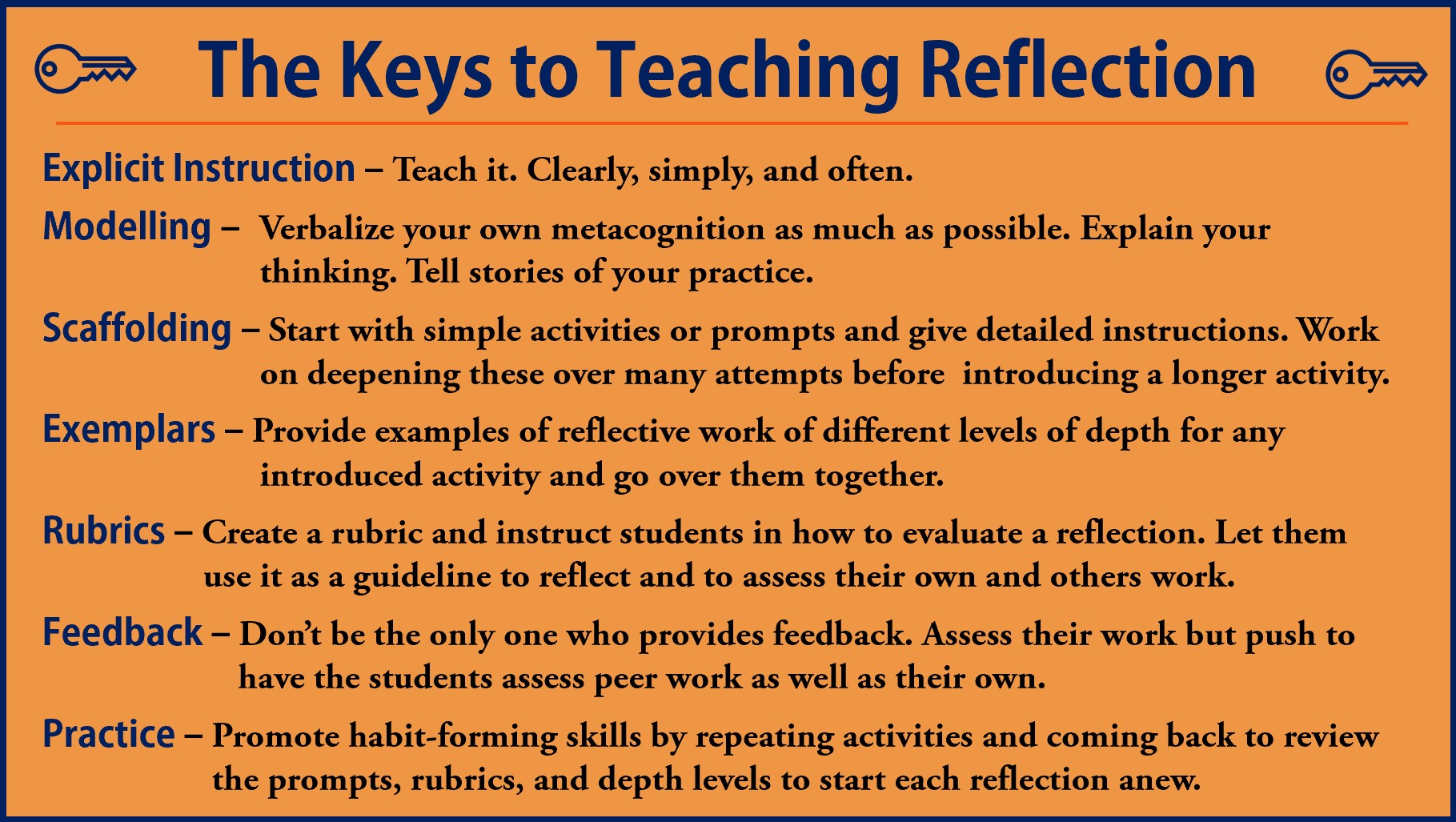10 A Final Reflection on Reflection
The Elephant in the Room
How are we going to do all of this? Is it possible for an educator to incorporate technology, start reflective practice, do project-based or inquiry learning (I know you are thinking about that too), assess adequately and with enough personalization, cover all the necessary content, meet the demands of course requirements, colleagues, administrators, and support social/emotion well-being of students at any moment of need? No. Our jobs are tough, arguably tougher now than ever before. It’s okay to pick one thing to start working on and continue working on it until it is engrained in your practice. Then, and only then, consider branching out to try something else, starting all over again. Let that one new thing be reflection.
Through this book I have attempted to convince you that reflection is the best strategy to both deepen student content learning and improve student independence through SRL. We must show students the value of reflection and guide them to take agency in their current and future learning—this is as important as any curricular outcome. And this takes time! Even the titans of research into SRL and reflection acknowledge the need to prune the curriculum to make space for this type of training.22 But it might not need to be a deep cut, as we have seen we can also wield reflection as a tool for students to explore content.
Training and Frequency Matter
Metacognition is generally undertaught, students have poor motivation, understanding, and belief in reflection (as do some educators), and reflection can be cognitively challenging. We know students will need ample training with robust scaffolding to make this work. And if the vision is to make this skill self-induced—which I believe it should be—to create reflective and self-sufficient learners, teachers will need to persevere through those tough introductory classes and work to get students beyond apathetic superficial reflections. Reflective training often fails when teachers and students don’t “stick it out” long enough to see real impact.5,32 Teachers can provide lots of opportunity and hope that students uncover an appreciation for reflective practice. Keep the focus and responsibility of learning with the learner. Remember to incorporate as much variety in activity and modality as possible, include group and peer work often, and set up cooperative systems and opportunities to self-assess the work of others as well as their own.
The Keys to Teaching Reflection
While many of these components have been discussed, or at least mentioned, in this book, here is a summary of the collected recommendations (from all the research, with and without digital learning) for creating a solid and successful reflective practice in your classroom:

Taken together, direct instruction incorporating these aspects would provide students with the best chance of developing strong reflective skills to improve performance in any content area and transfer these skills to any situation in their learning future.
BOTTOM LINE
*Boud et al. (1985), p.97

